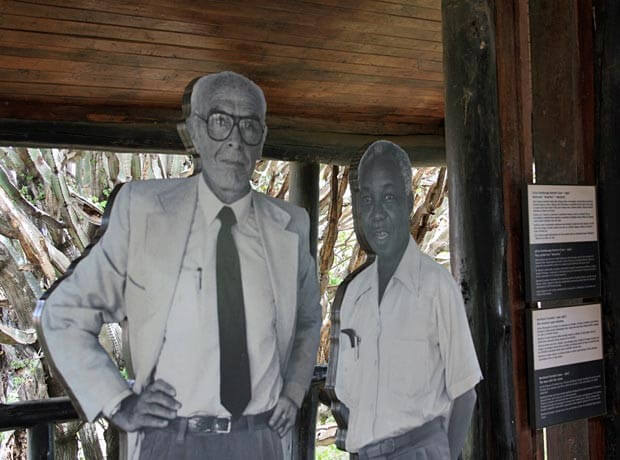
Sixty years ago, famous German wildlife conservationist and zoologist Professor Bernhard Grzimek and his son Michael proposed the formation of the Serengeti National Park and Ngorongoro Conservation Area, now the leading tourist magnets in East Africa.
Through Grzimek’s film and a book, all titled “Serengeti Shall Not Die,” these two premier tourist parks in Northern Tanzania are now celebrating rated among the most attractive wildlife parks for photographic safaris, pulling hundreds of thousands of tourists from all corners of the world to visit this part of Africa for wildlife safaris.
Reflecting back to the formation of these two premier tourist parks in Africa, Tanzania National Parks Authority (TANAPA) is celebrating on Monday this week, the 60 years of wildlife conservation success in Tanzania.

east African safari

prof grzimek and the first president of Tanzania dr julius nyerere
Standing as the leading tourist attraction hotspots in Tanzania and Africa, the parks are under the management and trusteeship of the Tanzania National Parks (TANAPA) as the custodian of wildlife and nature conservation in Tanzania.
When Tanzania gained its independence in 1961, there were only three national parks and the Ngorongoro Conservation Area Authority. Other than Serengeti, the first national park established in 1959, Lake Manyara and Arusha National Parks were the first photographic safari parks in those earlier days.
TANAPA Director-General Dr. Allan Kijazi said that up to September this year, the number of wildlife protected parks under the trusteeship of TANAPA had increased to 22, covering about 99,307 square Kilometers.
Marking 60 years of milestone conservation of wildlife and nature, TANAPA will be hosting a number of events this Monday at Fort Ikoma in the north-western corner of the Serengeti.
The events targeting to enhance wildlife conservation in Tanzania and Africa will involve media partners, policymakers, tourism stakeholders and other parties from conservation and tourism sectors.
Other than conservation and tourism development, TANAPA values the role played by the community towards conservation, therefore different approaches are adopted to provide conservation education to various conservation stakeholders, Dr. Kijazi said.
The park's management has been extending financial support to communities bordering national parks for implementation of community development projects through Support for Community Initiated Projects (SCIP).
These projects focus on education, health, transportation and water supply. Another project called Tanapa Income Generating Project (TIGP) has been launched.
The aim is to effectively contribute to poverty eradication for the communities living around the national parks while gaining their support for conservation, Kijazi said.